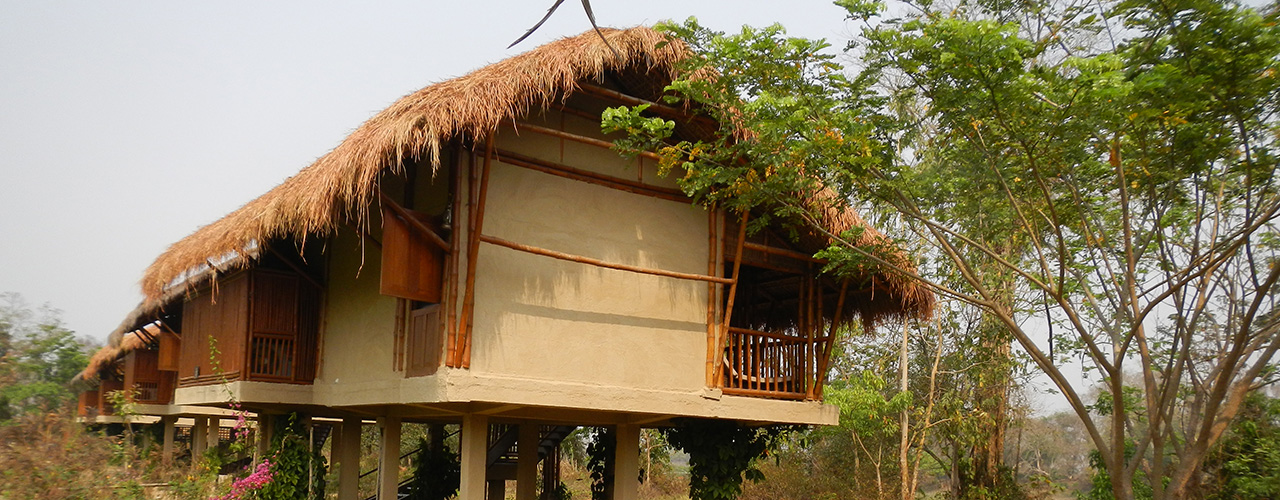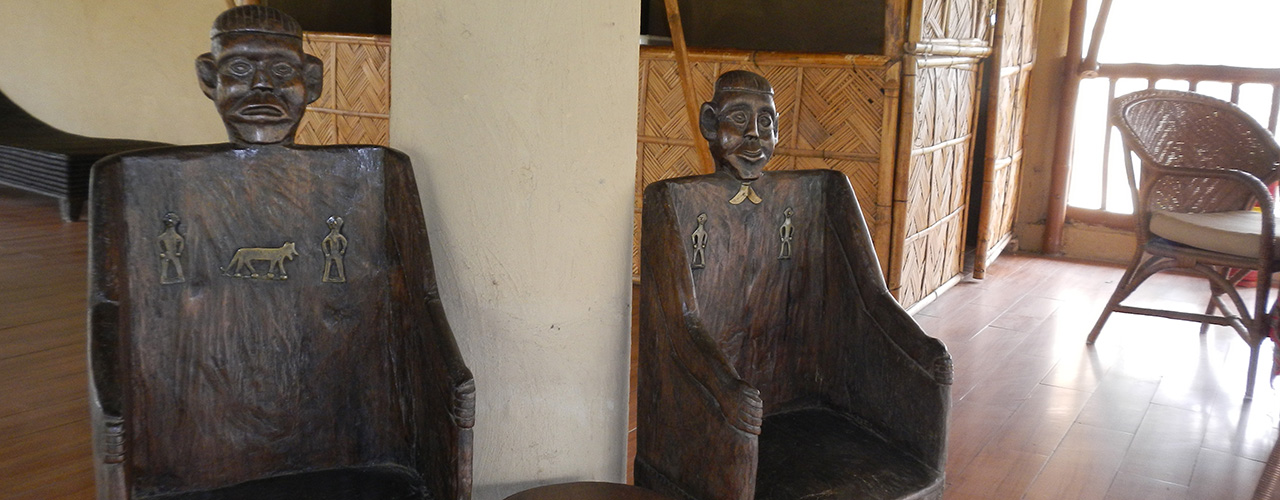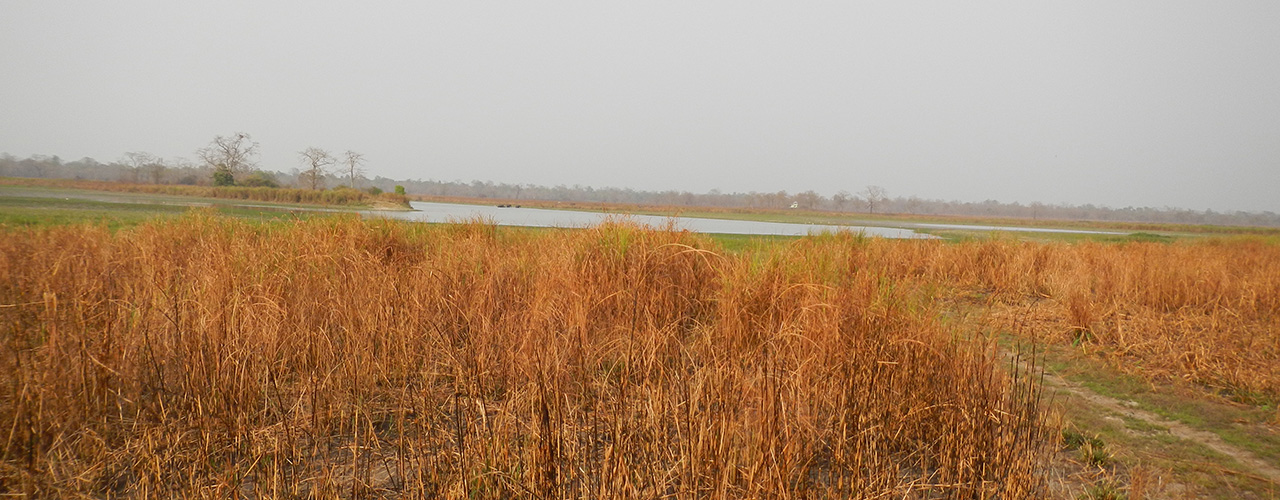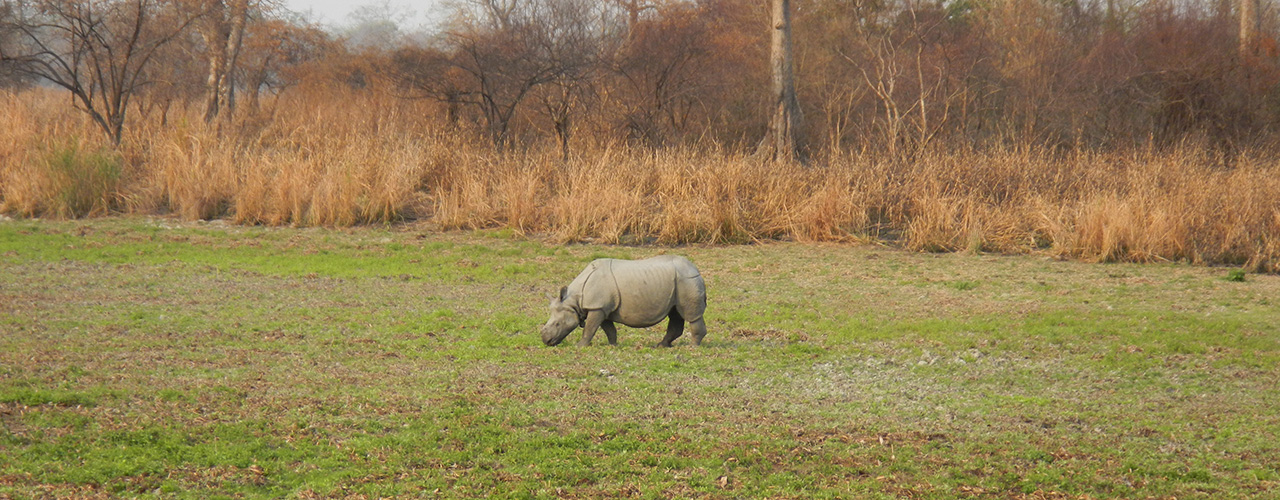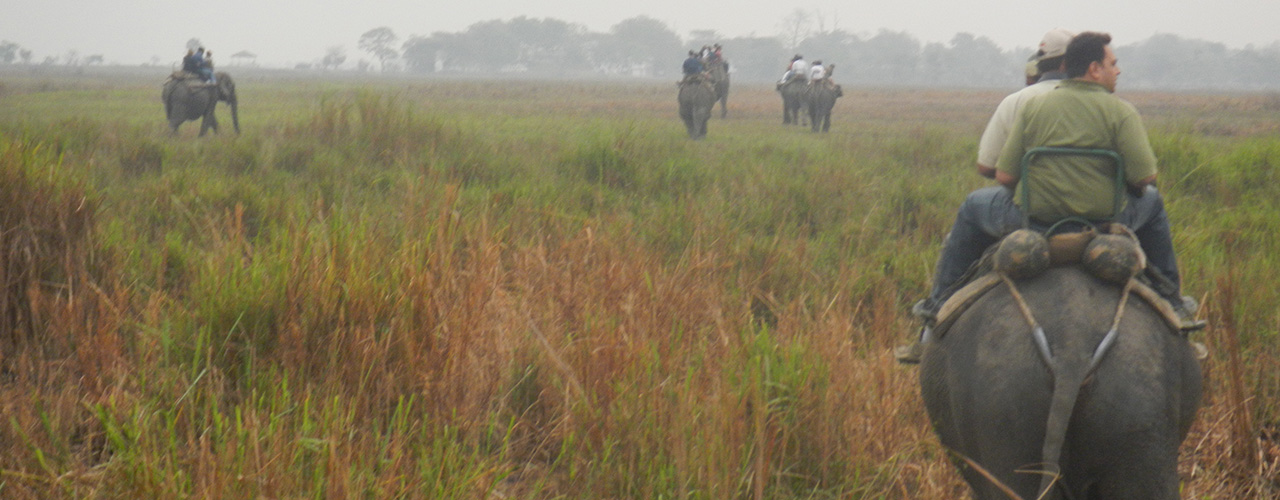Kaziranga National Park
SEND A QUERY
Kaziranga National Park in Assam is known for the great one-horned rhinoceroses and the highest density of tigers. It is also home to a breeding population of elephants, wild water buffalo and swamp deer. Recognised for its conservation of avifaunal species with a vast expanse of tall elephant grass, marshland and dense tropical moist broadleaf forests. The best way to view wild life and the bird species is on elephant back.
Where your legs guide you
As if in prayer
To the thick waters
Of bath and belief.
Located in central Assam, the Kaziranga National Park stretches east to west along the southern banks of the Brahmaputra, and spreads across the Nagaon and Golaghat districts. In the Karbi language, the name means “where the mountain goat has water”, and true to it, Kaziranga was once a quasi unreachable swamp used as hunting ground by local tribes. In 1908, Lord Curzon’s declaration for it to be made into a reserve forest was finalised, and in 1974, 24 years after gaining wildlife sanctuary status, Kaziranga became a national park.
The park’s geographical profile comprises mainly flatlands with streams, and large lakes. Most of its area is covered in tall, elephant grass, with some open grounds of shorter grass, and woods of cane, rising southwards into the Karbi hills. Most of its strategic forest area has now been replaced by tea plantations. The national park hosts 450 different types of birds resident and migratory , and is home to around 35 species of mammals, and is particularly famous for having the world’s largest population of the one-horned rhinoceros, wild asiatic water buffalo, and eastern swamp deer.
Tiger spotting safaris
Hire a jeep or take an elephant safari through the park for the best chance of spotting the best chance an array of wildlife in a shorter time span. A forest guard-and-guide will accompany you along any of the three routes Kohora, Baghori and Agaratoli assigned for tourist visits. The longest of these said routes, the Kohora, itself almost gives an entire feel of Kaziranga, the northern end of which runs parallel to a rivulet in which even its aquatic life can be thoroughly observed. The other two have plenty to boast as well, making each worth visiting. Declared a tiger reserve in 2006, this park is reputed to have the density of tiger population among protected areas world over.
Birdwatching
Once home to several varieties of vultures, most of which neared extinction, Kaziranga is recognized by Birdlife International as an important bird area IBA , and is therefore active in the conservation of bird populations. The scattered landlocked water bodies and the cyclical floods that affect the area make Kaziranga a popular destination for flocks of both native and migratory birds. A few vultures can still be spotted, along with a host of other bird species, making the park a birdwatcher’s paradise.
